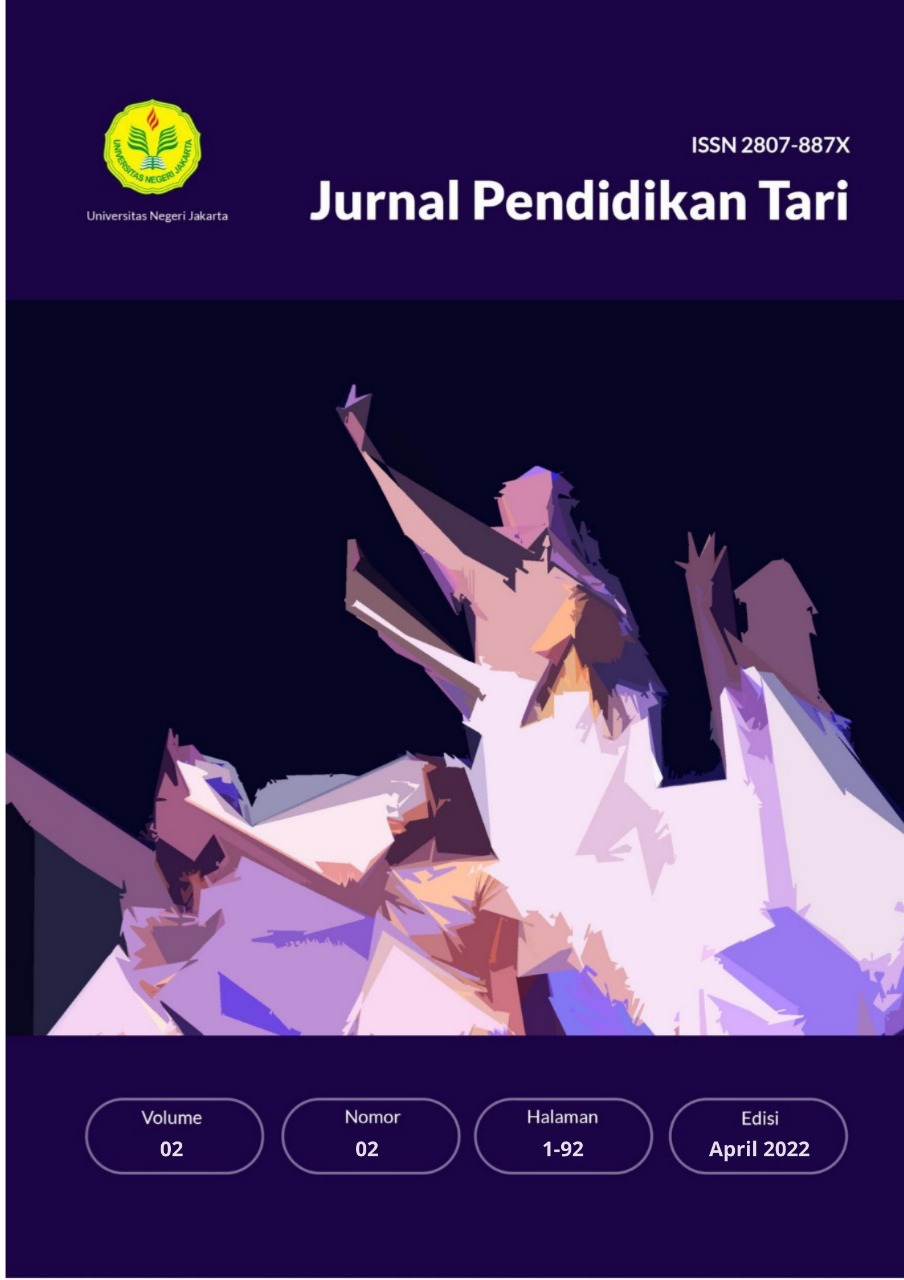Increasing Musical Ability Through the Mouth Gamelan Method (Gamut) in Courses Betawi-Sunda Dance Accompaniment
DOI:
https://doi.org/10.21009/JPT.226Keywords:
Improvement, Musicality, Gamut (gamelan mouth)Abstract
In the COVID-19 emergency, all lectures must be conducted online/virtually, including dance accompanist practice lectures. Students and lecturers are required to carry out practical lectures using human voice/vocals/mouth as the main medium in practicing a dance accompaniment, both Sundanese dance accompaniment and Betawi dance accompaniment according to the current semester RPS. This condition is not easy, because students must have adequate musical abilities, the simplest is that students must be able to catch melodies in harmony, must be able to catch rhythm/rhythm, and tempo in a dance accompaniment. Theoretical studies in this study use the theory of acapella, musicality, and gamut (oral gamelan) which explains musical ability, aspects of musical ability, and factors that influence musical ability. The research method uses Kurt Lewin's action research model, research conducted by teachers in their own classrooms through self-reflection, with the aim of improving their performance, so that learning outcomes increase. After going through several stages of the cycle, starting from the pre-cycle, cycle I, and cycle II, through the mother's actions there was a significant increase in students' musical abilities through the application of the gamut method (oral gamelan).


